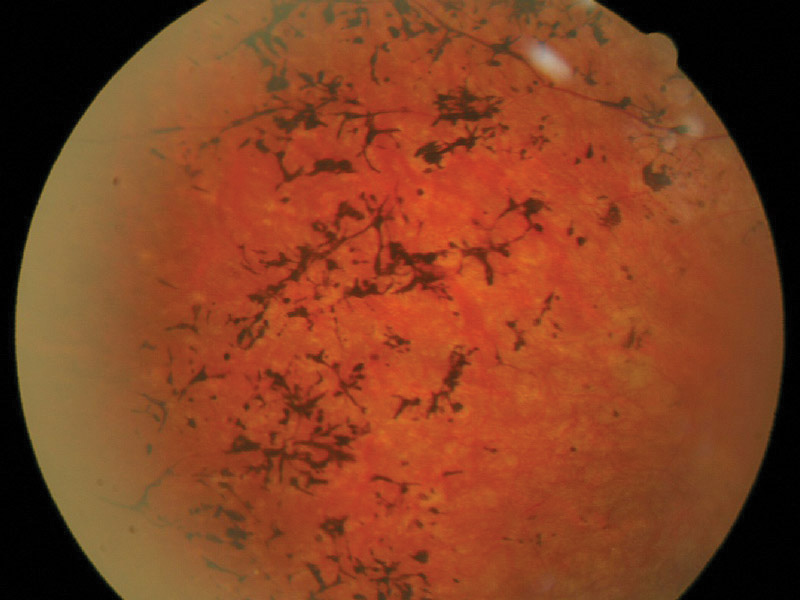Retinitis Pigmentosa
What is it?
It is the most common cause for hereditary retinal degeneration. An estimated 25,000 people affected are in Spain. Numerous genes (12 have been identified) can provoke it, being 50% of cases of hereditary nature (autosomal dominant, autosomal recessive and X-linked), and the remaining 50% appearing in sporadic forms, with no known family history. However, there are environmental factors that can affect protecting or favoring its progression. In recent decades, significant progress in understanding the various factors involved in its appearance and development have been made, although there is still a long way to go.
Its origin causes degeneration and apoptosis (cell death) of the photoreceptors (cells of the retina), canes (responsible for peripheral vision field) and in the final stages of the cones (central vision), causing blindness.
Symptoms
Retinitis pigmentosa (RP) appears quietly and slowly, so usually, affected do people not go to the ophthalmologist until about 15 years after the onset of night blindness symptoms. The age of onset is varied preferably between 25-40 years to develop. Cases occur in children under 20 years and, less frequently, cases in which the disease begins to show its symptoms past 50 years.
The first symptoms that should alarm us are night blindness or, what is the same slow capacity to adapt to the dark, the progressive loss of visual field, which will lead to having tunnel vision. In addition, there may be defects in color vision, and loss of central vision, which does not affect all people equally, even within the same family, finding elderly patients with normal visual acuity for their age.
The prognosis in Retinitis Pigmentosa depends on the form of inheritance and age of presentation. The later the disease appears, the better it is.
Treatment
Neuroprotective therapies, stem cell treatments, or gene therapy represent an important future for the treatment of these diseases, although their current therapeutic options are limited.
Second Sight (USA), has developed an electronic retinal prosthesis that allows an artificial vision in 2007 by ARGUS I, and in 2009 the ARGUS II. His results were valid so that, in February 2013, the FDA (Food and Drug Administration) of the USA gave its approval for use in patients with Retinitis Pigmentosa, implanted for the first time in Spain at the Barraquer Ophthalmology Center by Dr. Jeroni Nadal.
The ARGUS system is based on the placement of an intraocular implant that acts as an electrical epiretinal stimulator, placed on the surface of the retina. The system uses a pair of glasses to support an HD camera that is placed over the bridge of the nose. Said camera captures the images that will be processed and, through a pacing system, reach the occipital cortex.
Patients recover mostly perception of shapes, objects and movement in their surroundings, allowing them to regain some degree of interaction with himself/herself, as well as independent movement.
Prevention
The characterization of mutations in genes already involved in RP and thus the etiology based on DNA analysis, is, at present, a high cost and laborious task. There is hope that, in a not too distant future, the altered genes can be located in every family to make a selection of embryos that not suffer or transmit the disease, or generate an effective therapy for each affected part. Another option under consideration is the transplantation of stem cells in the retina.

